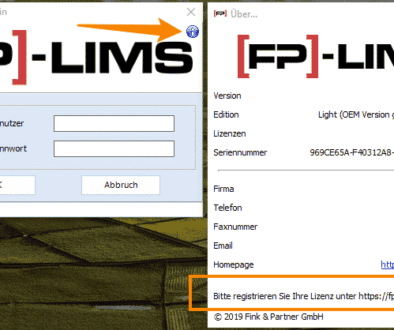Increase laboratory efficiency in the long term with an open source LIMS - is that possible?

A laboratory information management system (LIMS) is a software-based laboratory and information management system that provides optimized automation and control of laboratory processes from sample receipt to results reporting. A LIMS typically includes functions to manage sample tracking, sample analysis, results in entry and storage, and report distribution. There are a number of benefits that a LIMS brings to the laboratory environment, most notably; increased productivity and improved data quality, both of which reduce operational costs and free up personnel from mundane tasks. This type of software also serves to improve capacity, offering faster turnaround times for customers, increased accuracy and quality control, live searches, and the ability to collaborate with other departments. There are a number of open-source LIMS solutions on the market. But can such a LIMS be a long-term solution for laboratories? Can laboratory efficiency be increased in the long term with such a solution? We took a look.
What is an open source LIMS anyway?
Traditionally, LIMS systems have been proprietary software applications with source code that is not freely available to the public. This has often made it difficult for laboratories to customize their LIMS to meet their specific needs.
An open-source LIMS is a software application whose source code is freely available for modification or enhancement by anyone. This allows users to customize the software to their specific needs and also enables collaborative development. Recently, there has been a growing trend towards these LIMS solutions, although the open-source basis also comes with problems and distinct disadvantages.

Advantages of Open-source LIMS
An open-source LIMS can have many advantages for a company.
- One advantage is that the software is usually customizable, so it can be adapted to the company’s specific requirements.
- Another advantage is that open source software is often less expensive than licensed software.
- In addition, open-source software is often updated more frequently, which can lead to better functionality and security.
- In addition, an open-source solution can provide organizations with a higher level of transparency and collaboration among employees.
- Finally, open-source LIMS tend to be more user-friendly, making them easier for employees to learn and use.
- Innovation potential: Developers are not bound by old company specifications and often implement their own ideas and concepts.
Disadvantages of Open-source LIMS
The disadvantages of an open-source LIMS are manifold:
- Great dependence on an active community: activity is mostly dependent on demand and the potential of the project. In turn, the further development of the LIMS software stands and falls with this.
- There are neither guarantees nor classical support. However, help is usually received from the community.
- Depending on the open-source license, the code of own modifications must also be published free of charge. Modifications made to software under the General Public License (GPL for short) and released to the public in any way must also be published under the GPL.
- Bugs are found more quickly, but potential attackers can also find vulnerabilities in the project more easily – especially if a project has a less active community.
- Open source solutions require expert knowledge: When an open-source LIMS is introduced with corresponding individual further developments, the expert knowledge is usually distributed among a few heads. In the case of long-term use of the LIMS, this is a high corporate risk.
Conclusion: Attractive at first glance, but also risky
In summary, it can be said that an open-source LIMS can always be exciting for companies when a high degree of customization is necessary because the adaptability of open source LIMS solutions is very pronounced. However, the disadvantages are immense: the publicly accessible code also makes it possible for attackers to identify and attack potential software vulnerabilities more quickly – extremely risky, especially with such sensitive data as laboratory analyses. Also not to be neglected is the fact that a small number of in-house experts are usually responsible for the further development of the software. It’s hard to imagine what would happen if these experts were to retire or simply quit.
For companies that want their LIMS software to be highly customizable and scalable, Fink & Partner has developed [FP]-LIMS. Although this is not an open source-based solution, it is a modular LIMS software with many individual customization options. The developers of the software have always made it a priority to offer a very high level of practicality in daily use and to be able to meet the requirements of laboratories worldwide in a wide range of industries.Unlike many other LIMS solutions, [FP]-LIMS is a LIMS software that adapts to your requirements, not the other way around. Several settings and functionalities can therefore be freely and independently configured or individualized.


